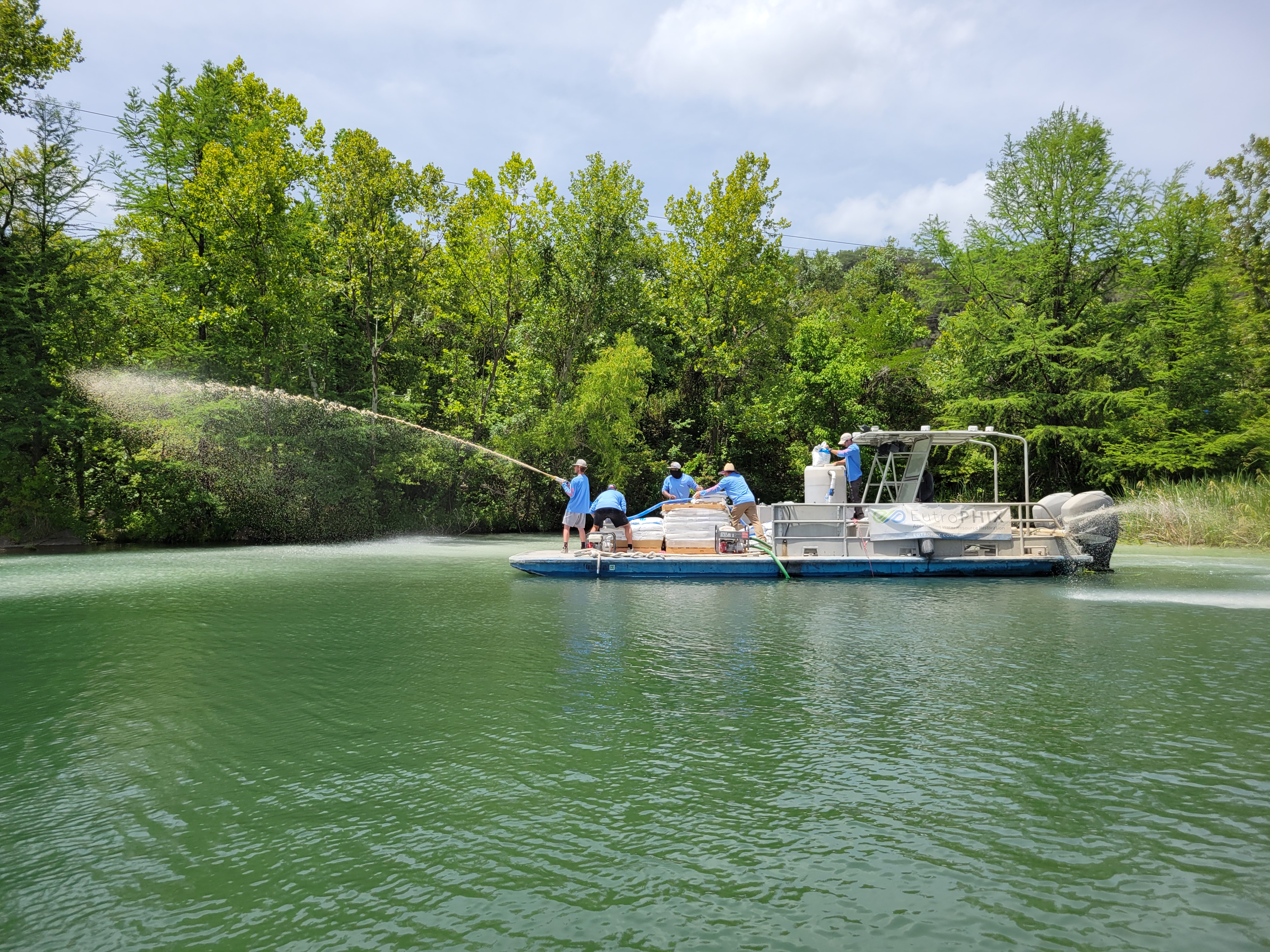City of Austin
FOR IMMEDIATE RELEASERelease Date: Jun. 06, 2025
Contact: Watershed Protection Department Media Line 512-974-1450

The pilot program consists of applying lanthanum-modified clay in specific areas of the lake
AUSTIN, TX - The City of Austin will conduct its final year of a five-year pilot program in an effort to reduce harmful algae blooms on parts of Lady Bird Lake. A harmful algae bloom or proliferation occurs when Cyanobacteria, or blue-green algae, produce toxins that can sicken people and be fatal to pets. The pilot program consists of applying lanthanum-modified clay in specific areas of the lake. The lanthanum molecule added to the clay binds to phosphorus, a key source of nutrients fueling excessive Cyanobacteria growth algae. Once bound into a mineral form, the phosphorus becomes unavailable to the algae. This essentially robs the algae of one of its primary food sources and reduces its growth.
The first of the pilot program’s final applications will take place on Monday, June 9, in three locations. If additional time is needed, the contractor will continue the work on June 10. A second and third application are planned for July and August, when algae proliferations, and potential to produce toxins, tend to be greatest in response to hotter temperatures. The contractor applies the material from a barge. It will look like the team is spraying a gray slurry into the lake that temporarily clouds the water. The substance is safe, but recreational boaters should stay away from the barge.
The contractor will apply the lanthanum-modified clay at:
- Red Bud Isle
- The boat ramp on the north shore of the lake, just west of I-35
- The north shore of the lake between I-35 and the lagoon behind the Festival Beach Boat Ramp
These applications in 2025 are the final phase of the city’s five-year contract attempting to reduce harmful algae proliferation through phosphorus management. The results of the pilot program over the past four years have been mixed. At Red Bud Isle, there have been significant reductions in the amount of phosphorus available that may fuel algal growth. Downriver, the changes have been smaller. We believe this is due in part to differing sediment chemistry and more frequently deposited material from urban tributaries.
The pilot program costs $300,000 per year and is funded through the drainage charge assessed on utility bills. Upon completion of the project, the city will continue to monitor conditions in the reservoirs while evaluating the data to determine the next best steps.
The most effective solution would likely be to reduce the amount of nutrients being washed into the reservoir. Austin residents can do their part by avoiding or limiting the use of fertilizers and picking up after their pets. For those that live along creeks, it would be helpful to plant trees, shrubs, perennials, and native grasses to help filter pollutants from stormwater. Removing or reducing the size of a home’s lawn in favor of native vegetation will also help reduce nutrient-rich runoff to storm drains and receiving waterbodies.
It's important to note that Austin residents contribute only part of the nutrients that enter Lady Bird Lake. Areas upstream of Austin and outside of the city’s jurisdiction are a major source of nutrients to the lakes. Fertilizers, leaking septic tanks, and treated wastewater effluent are all potential sources of nutrients. Climate change and zebra mussels are also likely altering nutrient cycling dynamics that can promote harmful algae blooms.
Fortunately, most of the harmful algae proliferations in the Austin area are not as widespread as in many other areas of the country and the world. It has not been necessary to close the lakes to recreation. That’s because the toxins have been confined to the algae mats, which are very patchy in their distribution, and toxins have not been released into the water.
The first documented harmful algae proliferations on Lady Bird Lake occurred in 2019, and one has occurred every year since then. Blooms have also occurred on Lake Austin, other Highland Lakes, and on Barton Creek. Other creeks and water bodies in our area may have had harmful algae blooms as well, but these have not been documented by city staff.
Harmful algae can be fatal to dogs and make people sick. In addition to algae, natural bodies of water can also potentially expose people and pets to bacteria and parasites. This is especially true when water is warm and stagnant. The city recommends that people and pets avoid contact with algae, do not drink from natural bodies of water, and rinse off after contact with the water. Do not allow dogs to lick their fur prior to rinsing. Please note that swimming is prohibited in Lady Bird Lake.
If a person has sudden, unexplained symptoms after swimming, they should contact their medical provider or the Texas Poison Control Center at 1-800-222-1222. For a pet, they should contact their veterinarian. Please also let the city know by completing this reporting form, found at AustinTexas.gov/Algae.
###

